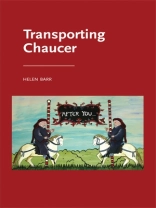This book draws on the work of the British sculptor Antony Gormley alongside more traditional literary scholarship to argue for new relationships between Chaucer’s poetry and works by others. Chaucer’s playfulness with textual history and chronology anticipates how his own work is figured in later (and earlier) texts. Conventional models of source and analogue study are re-energised to reveal unexpected, and sometimes unsettling, literary cohabitations and re-placements.
The author presents innovative readings of relationships between medieval texts and early modern drama, and between literary texts and material culture. Associations between medieval architecture, pilgrim practice, manuscript illustration and the soundscapes of dramatic performance reposition how we read Chaucer’s oeuvre and what gets made of it.
An invaluable resource for scholars and students of all levels with an interest in medieval English literary studies and early modern drama, Transporting Chaucer offers a new approach to how we encounter texts through time.
Tabela de Conteúdo
Introduction: Transporting Chaucer
1. The figure in the Canterbury stained glass: Chaucerian Beckets
2. Crossing borders: Northumberland bodies unbound
3. Chaucer’s hands
4. ‘Wrinkled deep in time’: Emily and Arcite in A Midsummer Night’s Dream
5. Bones and bays: on with The Knight’s Tale
6. Reverberate Troy: Sounding The House of Fame in Troilus and Cressida
7. Da capo
Select bibliography
Index
Sobre o autor
Helen Barr is Fellow and Tutor in English Language and Literature at Lady Margaret Hall, University of Oxford












